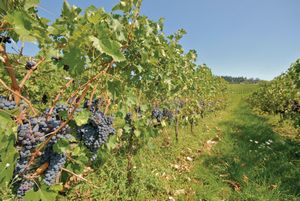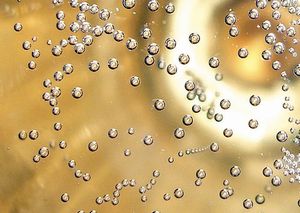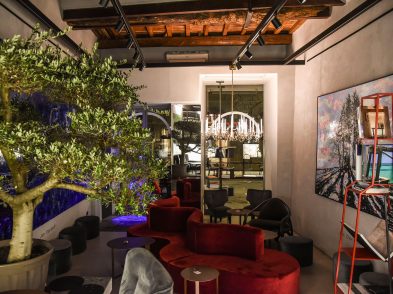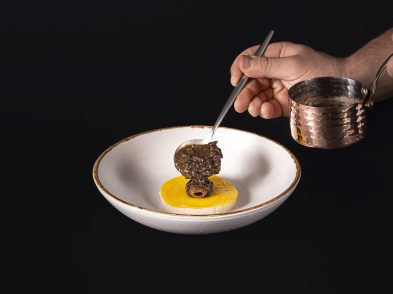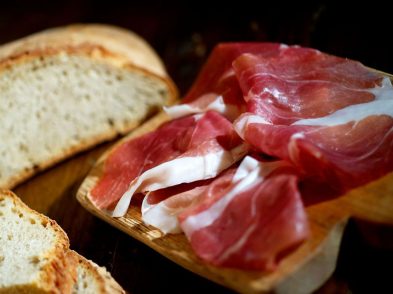Yes, the Piedmont region is famous for its bold, red wines. However, it also is home to some well known, and some lesser-known, wonderful whites. The cooler climate in Piedmont favours the crisp, soft and acidic taste of these light Italian wines. More importantly, they offer a vast array of unique flavors and are a perfect accompaniment to light summer fare. Meant to accompany food, not overpower it, perhaps the best part of these quality Piedmont whites is their low price. Happy tasting!
Asti
Near the town of Asti, in the southeastern part of the Piedm→ont region, is the home of Italy’s most famous sparkling wine called Asti, also known as Asti Spumante. With some 80 million bottles produced each year, it is second only in production to the Chianti DOCG.
Spumante simply means ‘sparkling’, but many people unfairly think of the Asti wine as being terribly sweet. In fact, both Asti and its lesser-known ‘cousin’ the Moscato d’Asti, are made entirely from the Moscato Bianco grape. If you ever get the chance to taste the grape, you will find it tastes just like the final, fizzy product. Asti is made in a process similar to Champagne—the original vintners modified what they had learned in Reims. Its alcohol rating is only about 8 percent. The Moscato d’Asti has an even lower alcohol content of about 5 to 7.5 percent. In some areas, this is technically too low to even be considered wine! I think of Asti as the way to start a grand gala, with its exuberant bubbles, and the Moscato d’Asti as a way to finish a quiet party: it is great accompanied with cookies. About 3 million bottles of the Moscato d’Asti are made each year, generally on smaller farms and cantinas.
Gavi
Another internationally renowned white wine produced in the area is Gavi. It is produced in 10 communes in the province of Alessandria and the small town of Gavi is situated in the center. The first mention of wine in Gavi is in a rental contract from the Bishop of Genoa, signed in 972. Gavi wine, also known as Gavi di Gavi and Cortese di Gavi, is a medium-dry wine made from the local Cortese grape. In centuries past, this grape was grown as a base for sparkling wine and as a contrast to the overwhelming amount of red wine grown in the area. After World War II, when many spumante makers turned to Puglia in search of cheaper base wines, the majority of the local producers in Gavi reverted to growing red grapes. However, some local growers bet on creating a world-class white wine from the cortese grape, and today’s Gavi was born.
Enoteca Italiana says ‘the wine is more or less light straw-yellow in color; it has a delicate, characteristic odor and is pleasantly dry, fresh and balanced on the palate. Minimum alcohol level: 10.5 percent. Consume with fish dishes’. Gavi is not an easy wine to appreciate, as the high acidity of the Cortese grape does not have a lot of alcoholic content to balance it out properly. Thus the wine can often appear austere, instead of soft and delicate on the palate. Some winemakers are aging part of their harvest in oak barrels in order to counteract this sharpness, while others are trying to attain a more delicate quality by making the wine slightly fizzy.
Roero Arneis
One of the newest guests at Italy’s white wine party is the Roero Arneis. The arneis grape originated and is still primarily grown in the Roero hills, just north of Alba, a small town located near the Tanaro River. It is a vine that is very difficult to grow; in fact, the word arneis in the local dialect means ‘whimsical’ or ‘little rascal’.
At one time, the arneis vines were put at the ends of the rows as a diversion to birds and insects in an effort to protect the more important nebbiolo and barbero vines. It also has a history as a cutting wine, used to lighten the tannins of the red wines of the area. This grape was so near extinction that, in the late 1960s, when Alfredo Currado wanted to buy 2,000 pounds (less than 1,000 kilos) of grapes to make an experimental wine, he had to buy the production of 46 different growers. When he sold his first Roero Arneis wine in 1970, it received enthusiastic reviews. The wine has recently joined the upper tier of Italian wines, earning the DOCG designation.
The Roero Arneis is a light to medium-bodied wine. It is also a wine with real character. Pale, straw-yellow with greenish tints, it has a persistent fruity aroma, with hints of almonds in its aftertaste. This wine is not easy to find in Italy and almost impossible to locate elsewhere, although this should soon change. You can find a wonderful selection at the Regional Cantina of the Roero in Canale (www.enotecadelroero.it), if you have an opportunity to travel to the region.



